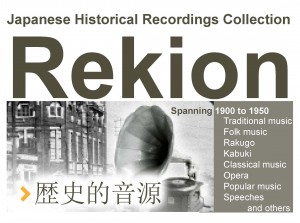As a continuation of the previous post about Shinpei Nakayama’s composition “Tokyo March”, this article will focus on Nakayama and his other well-known works.
Shinpei Nakayama (中山晋平) was born in 1887 in Nagano prefecture. He attended Tokyo School of Music (present day Tokyo University of the Arts).
One of his most beloved works is “The Gondola Song” (ゴンドラの唄, Gondora No Uta), which was used in Akira Kurosawa’s classic 1952 film, Ikiru (生きる). During his career, Nakayama composed a great number of popular melodies, including nearly 800 children’s songs, many of which were featured in the children’s picture magazine Kodomo No Kuni (Children’s Land).
- Rekion access in OSUL – Rekion Identifier for the 1934 recording of The Gondola Song” (ゴンドラの唄 ) is “info:ndljp/pid/1322660”
Nakayama was active at a time when radical changes were occurring in the nature of Japanese music and performance. Continue reading



